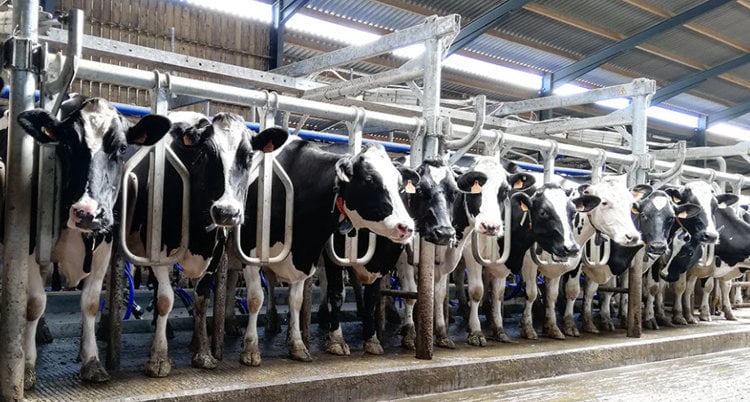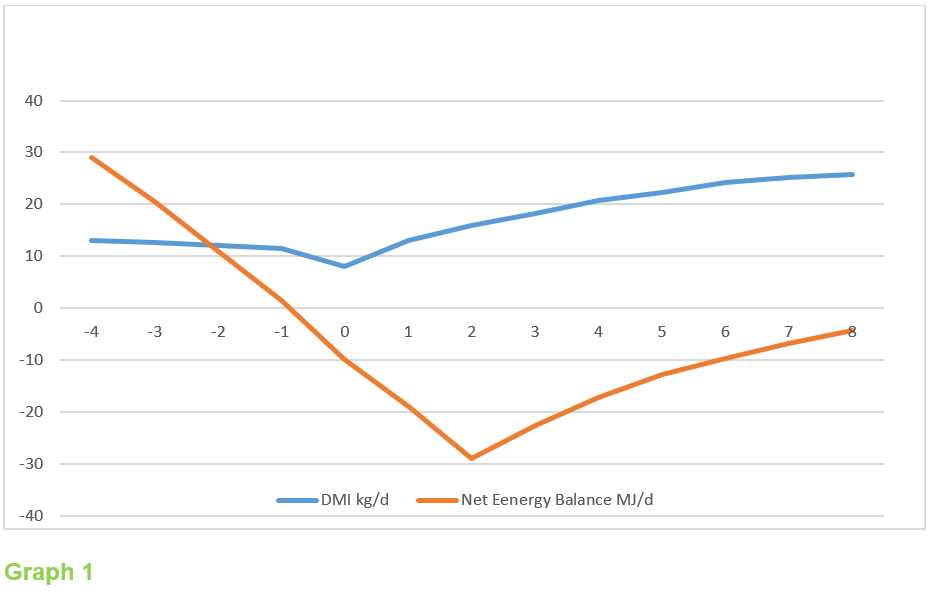Fresh Cow Secrets
The last 14 days before calving and the first 21 days after calving is critical to the lactation success of any dairy operation. Helping cows to transition smoothly from the dry period into early lactation is an untold secret of many successful dairy operations. Because cows that successfully come through this challenging time will achieve higher productions, be better reproducers in the herd and will thus unlock the potential of improving the overall herd performance. But if these cows do not get the necessary attention and management they need they have a significant potential to become a loss for any dairy operation because of their fragile pre-and post-partum metabolisms and immune systems.

As the pregnant cow approaches the end of the dry period, her nutritional requirements increase considerably. The fetus is growing more rapidly during this period than at any other point in gestation. The mammary gland is preparing for the ensuing lactation by increasing in size and starting to produce mammary gland secretions in the form of colostrum. However, at the same time, her dry matter intake (DMI) will decrease by 10% to 30% as she approaches parturition and is attributed to factors such as hormone fluctuations and the repositioning of the foetus. This can cause the cow to start to fall in a negative energy balance (NEB).
With the onset of lactation after parturition, the cow’s NEB keeps on increasing as the amount of energy required for the body’s immune system, repair and increasing milk production exceeds the amount of energy the cow can obtain from her diet, especially when her DMI is still as low as 1.5% of her live bodyweight. As a result, the cow will start to utilize her body fat as a source of energy to try to close the energy gap and get her out of her NEB.
However, there is a limit to the number of fatty acids that can be handled and used for energy by the liver. Thus, leaving the fresh cow in deep NEB and Ketonic stage. Because of the NEB the cow’s immune system is suppressed which makes her more susceptible to diseases such as mastitis, metritis, lameness, milk fever and ketosis after parturition.
When a cow experience one or more subclinical or clinical diseases at a time, her DMI decreases further leaving her in a severe NEB, as she does not consume enough energy due to reduced dry matter intake, to support the active defence mechanism of the immune system. The energy used for body maintenance and milk production will then be channelled to the immune system as it is an instinct of the body to use its energy to first combat inflammation and infections before it will be used for maintenance and production purposes.
In Graph 1, one can see how a pre-and post-Partum cow’s decrease in DMI correlates with her energy balance around the weeks before and after parturition.
The very first thing that will come to mind is to solve the NEB in pre-partition and the fresh lactation stage by increasing the energy density of the diet, however, it will rather be to improve the dry matter intake of the cow. Here is a simple calculation to demonstrate it. For example, if a fresh cow producing 30 litres of milk receives a diet with a 1000 VEM/kg DM and she eats 21.8 kg/day DM she will consume 21 800 VEM/day. When her DMI decrease to 19.8 kg/day DM she will only consume 19800 VEM/day. Leaving a gap of 2000 VEM/day to be filled.
To fill this gap the density of the diet needs to be increased with 101 VEM/kg DM, which means a 10% increase in the density to achieve the desired level and is almost impossible to achieve as it must be done solely from concentrate feeding. Increasing the density of the diet will however only treat the problem and not solve it and will also lead to an increase in feed costs.
Therefore it is of the greatest importance to maintain/improve the DMI around parturition by feeding high quality, palatable forages, feeding smaller portions of the ration regular, cleaning the feed bunks regular, pushing up the feed for the cow and supplying the correct feed bunk space. Feed bunk space is accepted at 76 cm/head, however, during the transition a bunks space of up to 1m/head has substantial benefits when improving dry matter intake.
Besides DMI two factors tend to be overlooked when it comes to transition cows around parturition namely separate groupings and stocking density. Grouping close-up and fresh cows separately from the herd creates the opportunity for herd managers to evaluate and inspect the whole group and cows individually. The advantage is that close-up cows and fresh cows that endure problems can be more easily identified, treated and monitored. More specific early fresh cows who tend to develop metritis, mastitis and lameness within the first two weeks after parturition.
Stocking pens to only 80% of its capacity will reduce feed bunk competition and thus improve DMI, reduce social stress and ensure adequate lying space. Pens that supply a laying space of 36 m²/head and are well-bedded will encourage cows to lay down and rest which will improve her recovery time and prevent feet problems like lesions from developing. Dairies that tend to overstock their transition cow pens typically struggle with more health events during this period.
If the fresh pen is overstocked during high calving periods, herd managers may need to reduce the number of days in the fresh pen for cows that are transitioning well. When moving a cow out of the fresh pen they must meet the following four criteria: 1. must be more than 21 days in milk; 2. must be healthy without any inflammation or infections; 3. must have a milk production above the group average; 4. must have good rumen fill.
The transition period around parturition will always be an important and vulnerable period for the dairy cow. How well she transitions during this time play a very important role in determining her profitability for the dairy operation. Each litre increase she reaches more in her peak milk production is equal 200 litres of additional milk over her lactation but the downside can be that cows that do not transition well can cost the dairy operation up to 1800 litres of milk over her lactation or in worst cases be part of the 30% statistic of cows that leave a herd within the first 60 days of lactation. It is no secret any more giving transition cows around parturition the necessary management and attention contribute to the overall success of any dairy operation.
For more information regarding how De Heus South Africa can help you in better managing your animal feed and increase production or any have questions related to our articles and products Feel free to give us a call or send us an email

